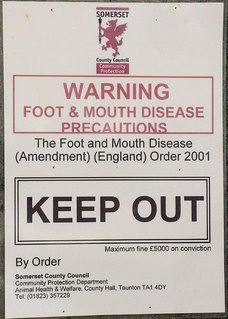 While researching this series, I read through a great many comments made by Health Canada officials regarding the Food Guide.
While researching this series, I read through a great many comments made by Health Canada officials regarding the Food Guide.
Some were remarkable due to their comparison with the path the Food Guide revisions have actually taken, and others were remarkable simply due to what was said.
In no particular order, what follows are some of my favourite Health Canada Food Guide related Quobesities:
1. On obesity in general
"Obesity is a very complex issue but I think that we’re not needing to label it as a disease"despite it being labeled a disease by the World Health Organization , the National Institutes of Health, and virtually every major medical organization in the world.
2. On blindly following the Food Guide to maintain a "healthy weight" without paying any attention to calories,
"Canadians who follow the draft guide will in fact find that they will maintain a healthy weight"Magically I suppose.
3. On the revision process,
"The revision process is evidence-based, collaborative, transparent and tied to public-health priorities",but don't ask them to show you the revisions, the evidence or the process itself because those are secret.
4. On what the industry actually contributes to the Food Guide revision process,
"The lobbying is intense but the revisions will be based on proper nutrition."And in the same article a note saying that the Beef Information Centre is pushing for more beef (got it), Refreshments Canada is pushing to not have a list of good and bad foods (got it), Kellogg's is lobbying over serving size (got it), and the Canadian Poultry and Egg Processors Council pushing to ensure that the Food Guide doesn't specifically call out packaged and restaurant foods (got it).
5. On fruits and vegetables,
"For example, we know that fruits and vegetables provide protection against forms of cancer and cardiovascular disease"BUT they're going to recommend that you eat less of them!
6. On "Other" foods,
"It means we're talking about breads and cereals, not croissants and muffins. There's very little room for extras in this pattern such as cakes pastries, french fries, ice cream and alcohol. It requires different choices to be made"BUT they won't provide you with any guidance on other foods, they'll simply pretend they don't exist despite the fact that they know that Canadians on average get 25% of their calories from "Other" foods.
7. On their revision,
"What we did in November was come out with a platform. It was the best we could do at the time. What we heard back was, "Sorry, it's not good enough". So what we've done is take the nature of "Sorry, it's not good enough," and we have taken the next steps."22 months was just not enough time to come out with a good product? What? You want to see the changes they've made? Sorry, not going to happen.
8. On those very changes,
"Help me guys, is there another piece here?"Question asked by Health Canada official to other Health Canada officials after Liberal MP Ruby Dhalla asked if they could provide another example of the changes they'd made to their "Sorry, not good enough" draft after they had provided the singular example of sodium.
9. On their listening skills,
"So we've spent an enormous amount of time trying to take the input that's been given to us, understand it, reflect on it, and make sure that when we finish the process we have something that's stronger"Yet when they asked Dr. Arya Sharma, the head of the Canadian Obesity Network if he felt there should be guidance on Calories and he said to them "YES", their enormous amount of time taking his input, understanding his input and reflecting on his input led them to report to the House of Commons that,
"I can tell you that we've actually met with the scientific director of the Canadian Obesity Network, Dr. Sharma. We asked him whether he thought we should be talking about caloires. His answer was no."10. On nutrients being more important than foods,
"An earlier comment said that we seem to be preoccupied with nutrient adequacy. We are not. If I leave you with one thought, it is that the chronic disease prevention components of this guide are every bit as important to us as the nutrient adequacy"Yet they do not recommend maximizing whole grains and minimizing refined, they do not recommend decreased red meat consumption, they do not recommend the preferential consumption of fish over other protein sources, they recommend you eat fewer fruits and vegetables and plenty of dairy despite the fact that ALL of those shortcomings fly in the face of what we understand about diet and the prevention of chronic diseases.
11. On using current Canadian dietary habits as a design basis,
"We can't develop a de novo pattern"Ummmmm, why not?
12. On the release of the new Food Guide,
"I can categorically tell you that when this Food Guide comes out there will be criticism"Well isn't that something, I actually agree with Health Canada!
Tomorrow: What Can You Do? - Some ideas about how to make your concerns known, and where can you turn to for sound dietary advice?
Yesterday: Guidance? What Guidance? - The sage advice of the Food Guide on how to manage your weight



 I sure hope you don't like ketchup.
I sure hope you don't like ketchup.  Back in April my concerns regarding calories and the draft Food Guide
Back in April my concerns regarding calories and the draft Food Guide 
 Dairy is big business in Canada.
Dairy is big business in Canada.  When considering this post I was tempted to simply leave it at one line,
When considering this post I was tempted to simply leave it at one line,  According to the
According to the  At least that's what Health Canada has consistently told us.
At least that's what Health Canada has consistently told us.  Even Wonder Bread knows whole grains are healthier. They of course still have their original recipe, but now you can also choose 100% whole grain wonder bread and something they call
Even Wonder Bread knows whole grains are healthier. They of course still have their original recipe, but now you can also choose 100% whole grain wonder bread and something they call  Health Canada is very proud of their consultative process. They will happily talk about their coast-to-coast consultations and how they spent more time doing outreach with this Food Guide revision than any other.
Health Canada is very proud of their consultative process. They will happily talk about their coast-to-coast consultations and how they spent more time doing outreach with this Food Guide revision than any other. Zinc is a micro nutrient, as are all vitamins and minerals that are essential in minute amounts for healthy cellular growth and metabolism.
Zinc is a micro nutrient, as are all vitamins and minerals that are essential in minute amounts for healthy cellular growth and metabolism. 
